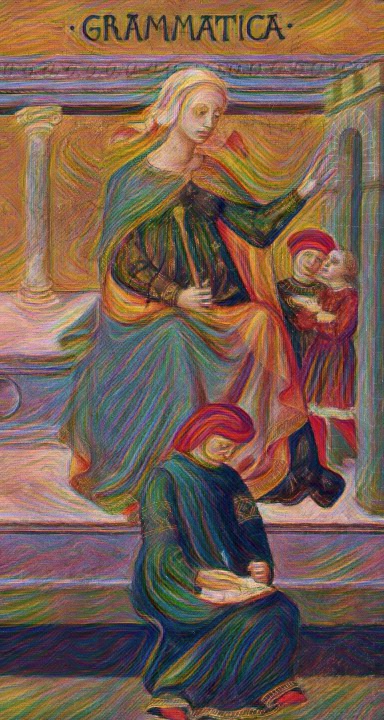Grammar

Grammar takes its name from the written character, as the derivation of the word indicates. The definition of grammar was historically: “The science which teaches us to explain the poets and historians; it is the art which qualifies us to write and speak correctly. Grammar is the source and foundation of the liberal arts. It should be taught in every school.”
Since the art of writing and speaking correctly is attained through it. How could one understand the sense of the spoken word or the meaning of letters and syllables, if one had not learned this before from grammar? How could one know about metrical feet, accent and verses, if grammar had not given one knowledge of them? How should one learn to know the articulation of discourse, the advantages of figurative language, the laws of word formation, and the correct forms of words, if one had not familiarised himself with the art of grammar?
All the forms of speech, of which secular science makes use in its writings, are found repeatedly employed in the Holy Scriptures. Everyone, who reads the sacred Scriptures
with care, will discover that our Biblical authors have used derivative forms of speech in great and more manifold abundance than would have been supposed and believed. There are in the Scriptures not only examples of all kinds of figurative expressions, but the
designations of some of them by name; as allegory, riddle and parable. A knowledge of these things has proved to be necessary for the interpretation of those passages of Holy Scripture which admit of a two-fold sense as a strictly literal interpretation would lead to
absurdities.
Everywhere we are to consider whether that, which we do not at once understand, is to be apprehended as a figurative expression in some sense. A knowledge of prosody, which is offered in grammar, is not dishonorable, since among the Jews, as Saint Jerome testifies, the Psalter resounds sometimes with iambics, sometimes with Alcaics, sometimes chooses sonorous Sapphics and sometimes even does not disdain catalectic feet. But in Deuteronomy and Isaiah, as in Solomon and Job, as Josephus and Origen have pointed out, there are hexameters and pentameters. Hence this art, though it may be secular, has nothing unworthy in itself; it should rather be learned as thoroughly as possible.
Awaiting further Citations. . . Please come back soon.
![]()
